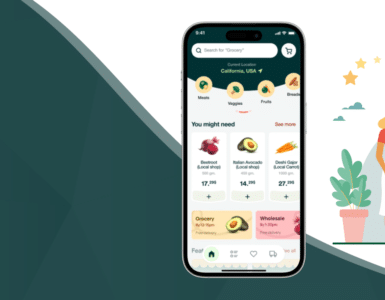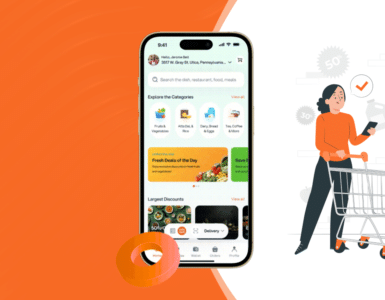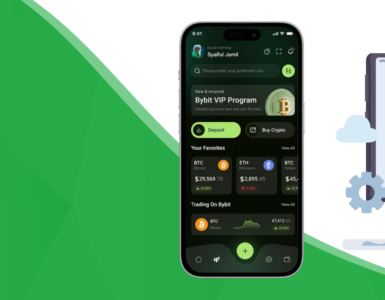Medicines are an inevitable part of our lives, whether we like it or not. As our health evolves with age and lifestyle, medications become more essential. But today’s digital-first world demands convenience and speed—nobody wants to stand in long queues or brave the weather just to refill a prescription.
With the surge of on-demand services and the impact of COVID-19, the global shift toward online medicine delivery has accelerated dramatically. Consumers now prefer ordering medicines from the comfort of their homes, often lured by exclusive discounts, subscription deals, and contactless delivery options. These apps also maintain customer privacy while discreetly delivering essential healthcare products.
Pharmacy businesses swiftly recognized this opportunity, investing in online medicine delivery app development to stay competitive. Today, such apps not only expand market reach but also enhance customer convenience—making them a strategic move for modern pharmacies.
Market Insights: The Rise of ePharmacy
The global ePharmacy market was valued at $62.59 billion in 2019 and has continued to grow steadily. According to Statista, the market is projected to reach over $177 billion by 2026, growing at a CAGR of 13% or more.
Pandemic-driven lockdowns, social distancing norms, and a heightened focus on health have fueled this surge. Additionally, prescription drugs continue to account for over 60% of all medicine sales, reinforcing the critical role of digital pharmacies in healthcare ecosystems.
Clearly, medicine delivery app development is not just a trend—it’s the future of pharmacy.
Step-by-Step Guide to Developing Your Online Medicine Delivery App
If you’re planning to launch your own app, here’s a detailed roadmap:
1. Understand the ePharmacy Business and Select the Right Model
Before investing in technology, understand the pharmacy business landscape and choose a model that aligns with your goals. The three most common models are:
-
Individual Pharmacy Stores: Apps developed by single stores for direct delivery.
-
B2C Platforms: Direct service from pharmacy to customer.
-
Aggregator Model: Connects multiple pharmacies to customers via a central platform.
For most small to mid-sized businesses, direct-to-customer platforms offer a manageable and profitable entry point.
2. Conduct Market Research and Identify Gaps
Thorough market research helps uncover customer pain points, unmet needs, and existing competitors’ weaknesses. This insight allows you to:
-
Design features that solve real problems
-
Differentiate your app with value-added services (like 24/7 delivery or medicine reminders)
-
Benchmark your pricing and UX design
Use tools like Google Trends, SEMrush, or Think with Google to understand user behavior.
3. Define Core Features and Functionalities
Avoid overloading your app with features users don’t need. Start with essential functionalities and then build out advanced features over time.
Must-have features:
-
Easy search and filter
-
Upload prescription
-
Refill reminders
-
Order tracking
-
Secure login and registration
-
Chat support
Advanced features:
-
Telemedicine integration
-
AI-based suggestions
-
EHR sync
-
Voice search
📌 For more on planning features, see our blog on Mobile App Design Stages.
4. Choose the Right Tech Stack
Your app’s performance depends heavily on the technology stack you use. Here’s a sample stack to get you started:
-
Database: MongoDB, PostgreSQL, or Cassandra
-
Front-End: React Native or Flutter
-
Back-End: Node.js or Django
-
Cloud Hosting: AWS, Google Cloud, or Microsoft Azure
-
Push Notifications: Firebase or OneSignal
Make sure your stack is scalable, secure, and optimized for high performance.
5. Prioritize UI/UX Design
A well-designed UI/UX can make or break your app. Focus on:
-
Minimalist design with clean layout
-
Easy navigation
-
Quick checkout process
-
Accessibility for all users
A modern, intuitive design increases retention and boosts app credibility. For reference, check our mobile app development services and portfolio.

6. Offer Flexible Payment Options
Payment integration is a critical component of the user experience. Provide multiple, secure methods such as:
-
Credit/Debit cards
-
Net banking
-
UPI
-
Mobile wallets (Paytm, PhonePe, etc.)
Integrate trusted payment gateways like Razorpay, CCAvenue, or PayU to build user confidence.
7. Test Rigorously and Maintain Regular Updates
After development, invest heavily in QA testing to eliminate bugs, glitches, and crashes. Use:
-
Manual and automated testing
-
Load testing for high traffic
-
Security audits
Post-launch, ensure ongoing maintenance to add features, fix issues, and improve performance based on user feedback.
8. Launch and Market Your App
A well-built app needs a strong go-to-market strategy. Focus on both pre-launch buzz and post-launch growth using:
-
Social media ads
-
Influencer marketing
-
Google App Campaigns
-
Email promotions
-
App store optimization (ASO)
You can also explore pre-built solutions to speed up your development process and reduce time to market. For example, the eMart Worker – Service Man App available on CodeCanyon provides a great starting point for building on-demand service platforms, including medicine delivery apps. These customizable templates can help you launch faster with essential features like order tracking, login, and notifications already integrated.
Also, consider offering signup bonuses, discount coupons, and loyalty rewards to increase downloads and user engagement.
Cost Estimation: What Will It Take?
While costs vary by region and complexity, the total app development cost depends on:
-
Feature complexity
-
UI/UX design quality
-
Technology stack
-
Platform (iOS, Android, or both)
-
Team size and location
-
Marketing and post-launch support
On average, building a full-featured medicine delivery app may cost anywhere between $15,000 to $60,000+, depending on the scale and customization required.
Final Thoughts
In the wake of global health challenges and the rise of digital healthcare, investing in an online pharmacy app is not just smart—it’s essential. Whether you’re a brick-and-mortar pharmacy looking to digitize or a startup exploring the healthcare space, a medicine delivery app offers sustainability, growth, and customer value.
By following this structured guide, you’ll be equipped to create an app that delivers care, convenience, and compliance—right into the hands of users.
Need expert help in building your app? Explore our mobile app development services or read our detailed guide on mobile app design for deeper insights.

























